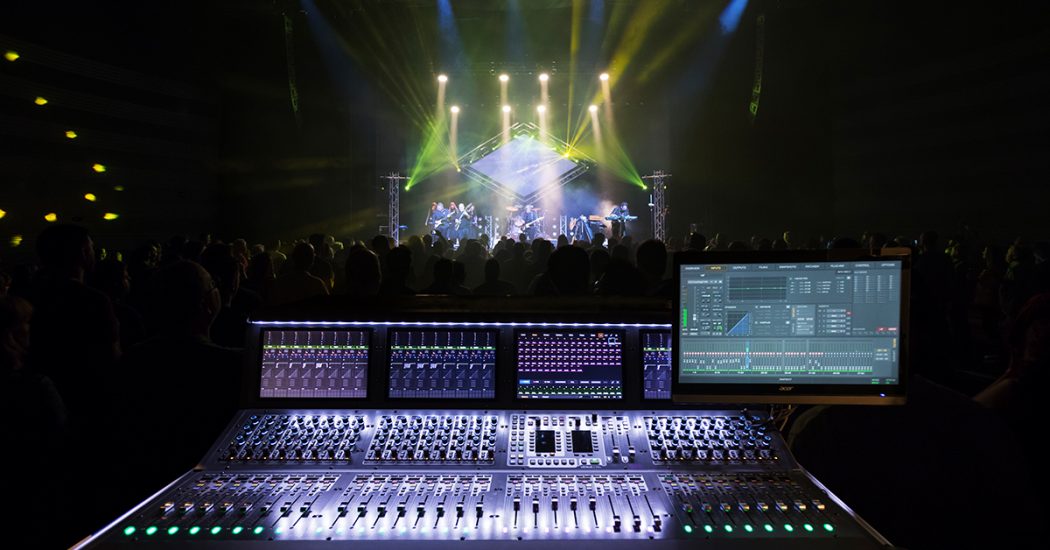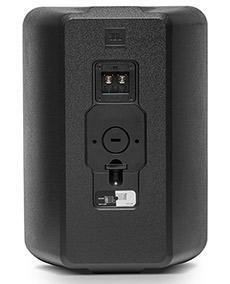
Building a PA system is something that is best approached with a plan. If you just buy a couple of speakers and start playing music, you will almost certainly find that they don’t suit the application where you are going to use them. So what do you need to know before you start the process?
Permanent or Portable?

Great for install.
This is the question that steers the beginning of your decision process. Are you going to set this system up once and leave it, or will you set it up and tear it down every single time? Manufacturers spend a lot of time and effort putting appropriate feature sets in systems to maximize their functionality. While something like a JBL Control 28-1 could be used as a portable speaker, those barrier strips are a pain to connect and disconnect multiple times.
Likewise, something like the QSC K12.2 has hanging points so you could install it, but a powered speaker with a relatively tight coverage pattern of 75 degrees isn’t a great choice for a wide room. Look for flexibility in connections and convenience features like handles and carry bags for portable PA systems. Look for simplicity and cosmetics that blend in with your location for an install system.
What’s the Size of the Room?
Particularly for a fixed install, the size of the room is a critical piece of information. Keep in mind that while the length and width of the room are important, the ceiling height is also critical. If you have access to architectural plans, then you want to review both the floor plan and the elevation plan so you have the measurements for all dimensions. This information is critical if you are going to build a model of the room in predictive software like EASE Focus.
If you don’t have access to building plans, a relatively inexpensive tool like a laser tape measure can help you get these dimensions. Keep in mind that this is important because a room that is 20 feet by 30 feet with a 12-foot ceiling requires a much different PA approach than that same room with a 24-foot ceiling.
The size of the room, coupled with the hardness of the surfaces in the room, also impacts the RT60 of the room. This is a measurement of how long it takes for a sound to quit ringing in a room. For a quick and dirty measurement, pop a balloon in the space and count how many seconds elapse before you quit hearing the echoes. A number below two seconds is pretty damped. Four or more seconds will impact your PA approach significantly. The longer the ring time, the less distinct the sound from the PA will be as you get farther away from it. A longer reverb time in the room can be addressed by making the surfaces more absorptive with treatment or by having more speakers so they’re closer to the people listening to them.
How Many People?
This question is important in an indoor space, but it is critical if you are looking at an outside application. The number of people will impact how far away they are from the speakers. It is also worth recognizing the fact that the human body is about 70% water, which makes it excellent at soaking up high-frequency content! Simply put, an empty room sounds much different than a room full of people.
In a fixed install, this range is pretty limited. How many people can fit in the room? Your range is generally going to be from about half full to completely full. In a portable application, this number can vary greatly. If you are going to build a system that needs to cover from 500 to 5,000 people, you will need a much more modular approach than one that only needs to cover 200–400 people. A speaker system like the JBL VRX Series allows you to add line-array modules to get more output and more coverage, making it very flexible.
How Loud Do You Need to Get?
Many of the variables we’ve already talked about go into answering the loudness question, but you also want to think about the type of music. If you are interested in heavy metal, then you need more output than you would for a singer/songwriter.

An SPL meter should be in every sound tech’s arsenal.
The type of monitoring also directly impacts this. If your performers are listening to open wedges, then your PA system needs to be at least 6dB louder than the output of those or the people in the front rows will mainly hear what comes off the back of the wedges — not a terribly pleasant experience. Acoustic drums or a live guitar amp onstage also means that your PA has to be louder than those sources or it will not have much effect.
A dedicated SPL meter, such as the Galaxy Audio Check Mate, or an iPhone app with a calibrated microphone like the MicW i437L gives you a way to make good decisions on how loud things are. Keep in mind that there may be local ordinances on how loud things can be, so that dB meter could come in very handy if the sound police come knocking on your door.
How loud also impacts how much “boom” or low-frequency content you have in your PA system. Keep in mind that generating low frequency costs more than generating mid and high frequencies, because it requires larger drivers and more powerful amplifiers.
Again, the type of music impacts this decision. If you are just boosting vocals over an accompaniment source, like an orchestra or a pipe organ, low frequency is less important than if you are trying to amplify bass and drums.

QSC Array with flown subs.
A good rule of thumb is to have one subwoofer for every three top boxes in lighter applications, and one for every two top boxes in heavier applications. Subwoofers on the ground are more efficient than ones that are flying in the air, so this may also impact your system design.
Also, headroom is your friend in PA applications. A system that can pump out 106dB of clean audio sounds way better running at 96dB than a system that can do 93dB trying to get to 96dB. Distortion is hardly ever your friend, and a system that is operating at close to the edge of its capabilities will cost you more in blown drivers and overheated amplifiers.
What Is Your Budget?
Finally, deciding how much you can afford to spend is the last critical piece of the equation. A lot of this is driven by what we have already covered. You have to be realistic. You can’t build a PA system for $1,000 and expect to be able to cover 10,000 people in a big room. Sometimes the best approach is to plan for where you want to be in a couple of years and buy some of the components for that bigger system now that can be used to cover a smaller room or range of people. PA gear is truly a place where you get what you pay for, so a 12-inch 2-way speaker that costs $700 will probably get a lot louder and sound a lot cleaner than one that costs $350.
There are lots of variables in putting together a system, but answering these questions will start you on solid footing. Give your Sweetwater Sales Engineer a call at (800) 222-4700 to start designing a system that will do what you need it to today and into the future.





